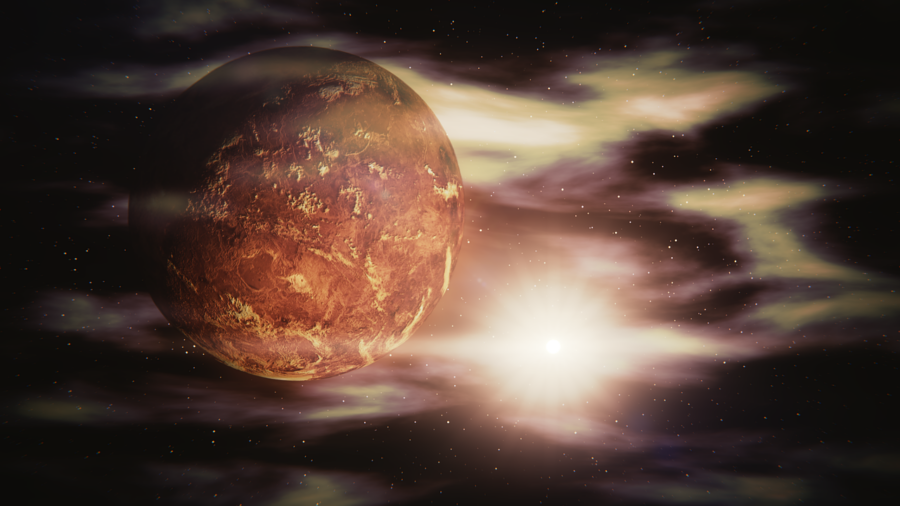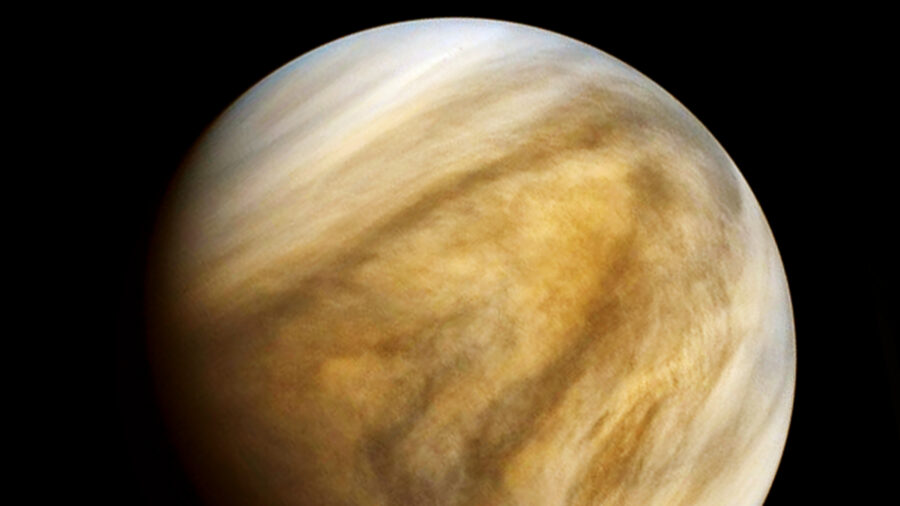Scientists Discover Origin Of Venus Bright Lights

Unlike our missions to our Moon and Mars, Venus continues to be a planet that scientists are still working hard to better understand. In a recent report from Science News, further analysis of the magnificent lights exploding around the second planet from the sun may not be lightning as we have come to accept but instead could be nothing more than passing meteors. Either way, researchers are hoping to get to the bottom of the phenomenon soon.
Once thought to be bursts from lightning, Venus’ observed bright lights are now believed to be from meteors passing the planet.
The difference between sailing meteors and giant bolts of lightning may not seem like something that needs to be immediately looked into but with a handful of missions to Venus on the horizon, it’s of the utmost importance.
Should the unexplained light source be from lightning, probes dropping onto Venus could be struck down on their journeys. On the other hand, if meteors are the answer behind the bright lights, those probes are at a much lower risk when they drop through the planet’s atmosphere or sail through the clouds.
There are somewhere between 10,000 and 100,000 of these lightning or meteor flashes on Venus every year.
Data collected from a group of researchers at Arizona State University in Tempe ran two separate tests with a mission to examine the mysterious lights.
One of these surveys was conducted by a telescope on Arizona’s Mount Bigelow while the other was carried out onboard Japan’s Akatsuki orbiter. After the study was complete, the scientists discovered that there are somewhere between 10,000 and 100,000 of these lightning or meteor flashes on Venus every year.

While no definitive answer was given, the researchers did find that the possibility of Venus’ mysterious flashes being meteors is actually very likely. Those space rocks zipping around the planet are moving faster than they would be in our atmosphere, traveling around 25 kilometers per second against our 20.3 kilometers per second.
The research done at Arizona State University is a major step forward in our understanding of how to conduct future missions on our neighboring planet.
This would make the meteors much more noticeable than they are on Earth, leading the team at Arizona State University to believe that there’s plenty of data to back up the belief that the flashes aren’t caused by lightning at all but instead by meteors.
This new finding is a very helpful one as, in the past, our information, which has come from other landers, has only given us information on Venus’ electromagnetic static. Of course, this data was still helpful as it led us to better understand the light flashes and static around the planet but it never gave us a clear picture of what those beams could be.
With this in mind, the research done at Arizona State University is a major step forward in our understanding of how to conduct future missions on our neighboring planet.
While we may be on a great trajectory to understanding Venus a little bit better, Mars is still the place where we’ve seen the most growth in the past few years. Making headlines seemingly every day, NASA’s Perseverance rover has been getting its hands (or wheels) dirty and dusty as it investigates every nook and cranny of the Red Planet.
From finding ways to create oxygen to the discovery that life may be a possibility after all, NASA is working overtime to uncover all the information that it can about our other planetary neighbor.












